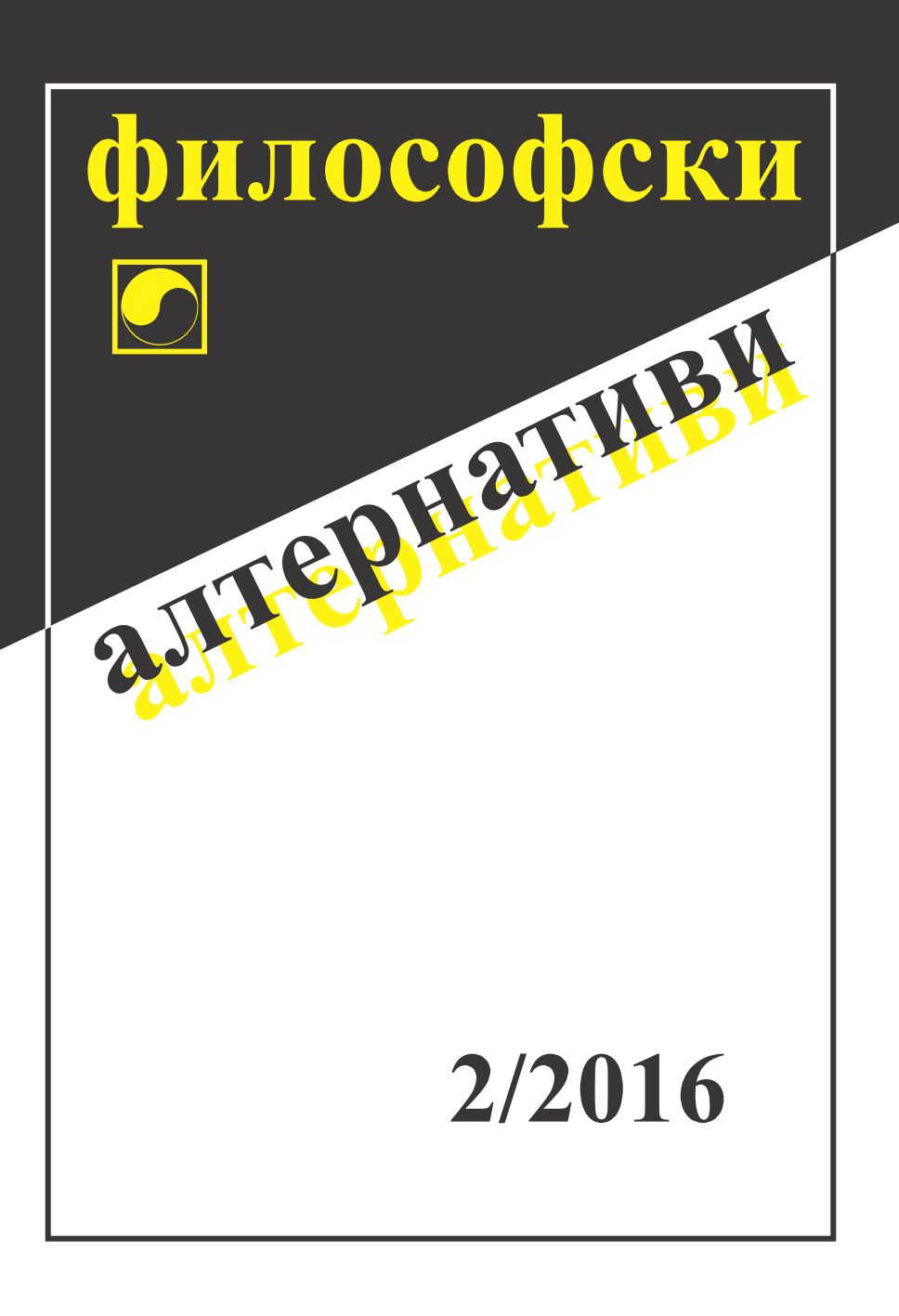
The Question of Cinema: Myth, Prophecy and Technology
This essay uses the method of Tensegrity – a means of dynamic methodological triangulation that allows for open threads and poetic interventions.
More...We kindly inform you that, as long as the subject affiliation of our 300.000+ articles is in progress, you might get unsufficient or no results on your third level or second level search. In this case, please broaden your search criteria.

This essay uses the method of Tensegrity – a means of dynamic methodological triangulation that allows for open threads and poetic interventions.
More...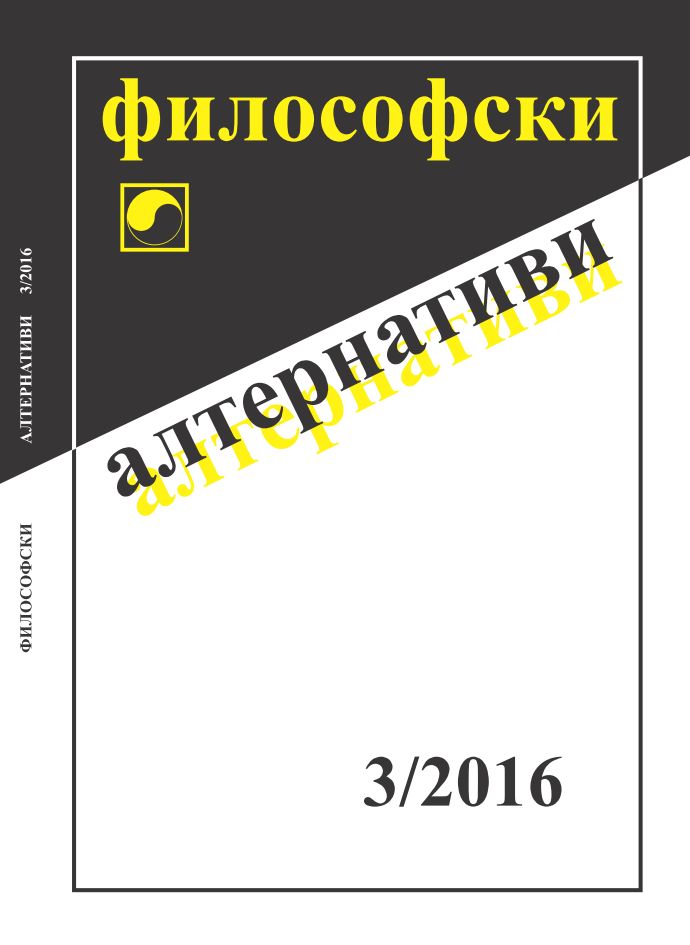
Considering art in the context of a game might clarify some troublesome questions related to so-called „contemporary“ art. By this approach, certain installations and actions acquire new interpretations. In this playful interaction between the artist and the public, meanings emerge and vanish.
More...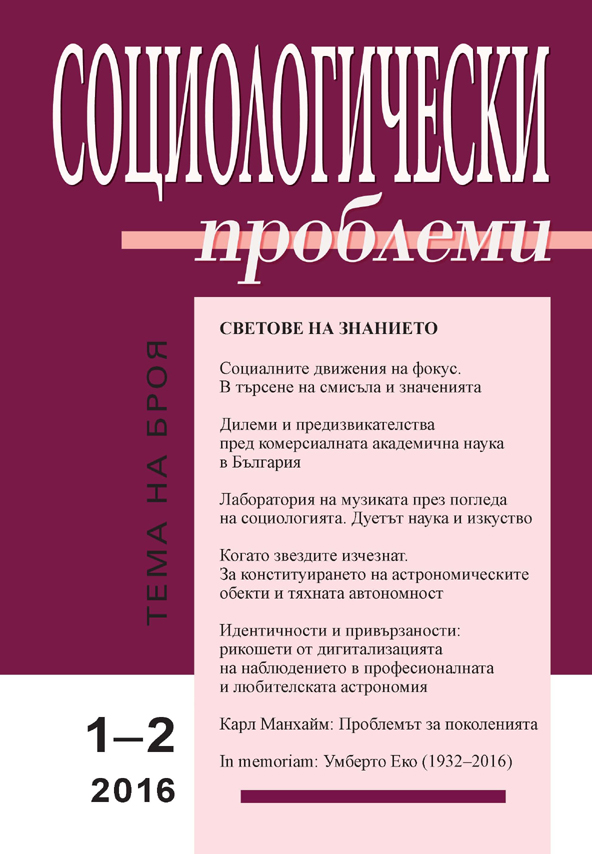
This article presents the music as an object of sociological analysis and the focus is on two musical genres – rock music and electronic music. The idea of writing this article was engendered from my personal commitment to the subject of study, as my aim was to examine technique and technology in the process of creating music. The basic theory used is the actor-network theory (Bruno Latour), complemented with the concepts of “taste of public” (Antoine Hennion), and the analysis of the contact between author and audience (Alfred Schutz). The article refers to empirical evidence of fieldwork from 10 to 30 October 2013.
More...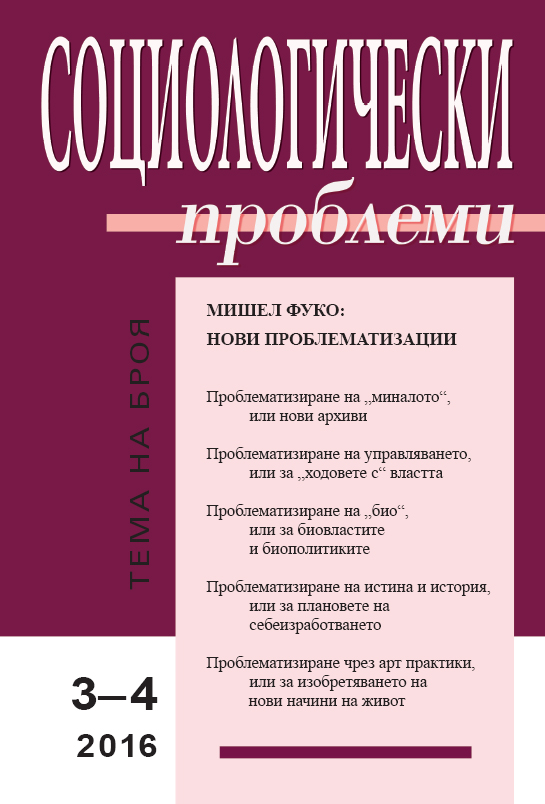
The essay overlays Michael Joyce’s 2015 novel, Foucault in Winter in the Linnaeus Garden – a polylingual, operatic fantasy comprised of invented letters— upon Foucault’s work, especially Madness and Civilization, as an existing topography that overlaps with the physical and emotional territories of the authors’ own lives. They meet at several locations, from New Hamburg and Nyack, to Marcel Broodthaers’ exhibition at MoMA, New York; while Daniel Bozhkov separately travels to Sweden, Spain, Germany, Bulgaria and Texas, in order to visit various locations mentioned in the novel, as well as ones not mentioned, but relevant to Foucault. The seemingly fragmented text, perforated by the authors’ letters to each other, exists in a non-stop costume ball of famous shadows – Goya, Dürer and Bosch meet Magritte, Deleuze and William Kentridge. A hand drawn map accompanies the essay as a parallel, Deleuzian fold that aims to further unravel the authors’ developing connection to each other (who first met through this project), and their relationship to Michel Foucault’s unsettling and foreverprovocative endeavor.
More...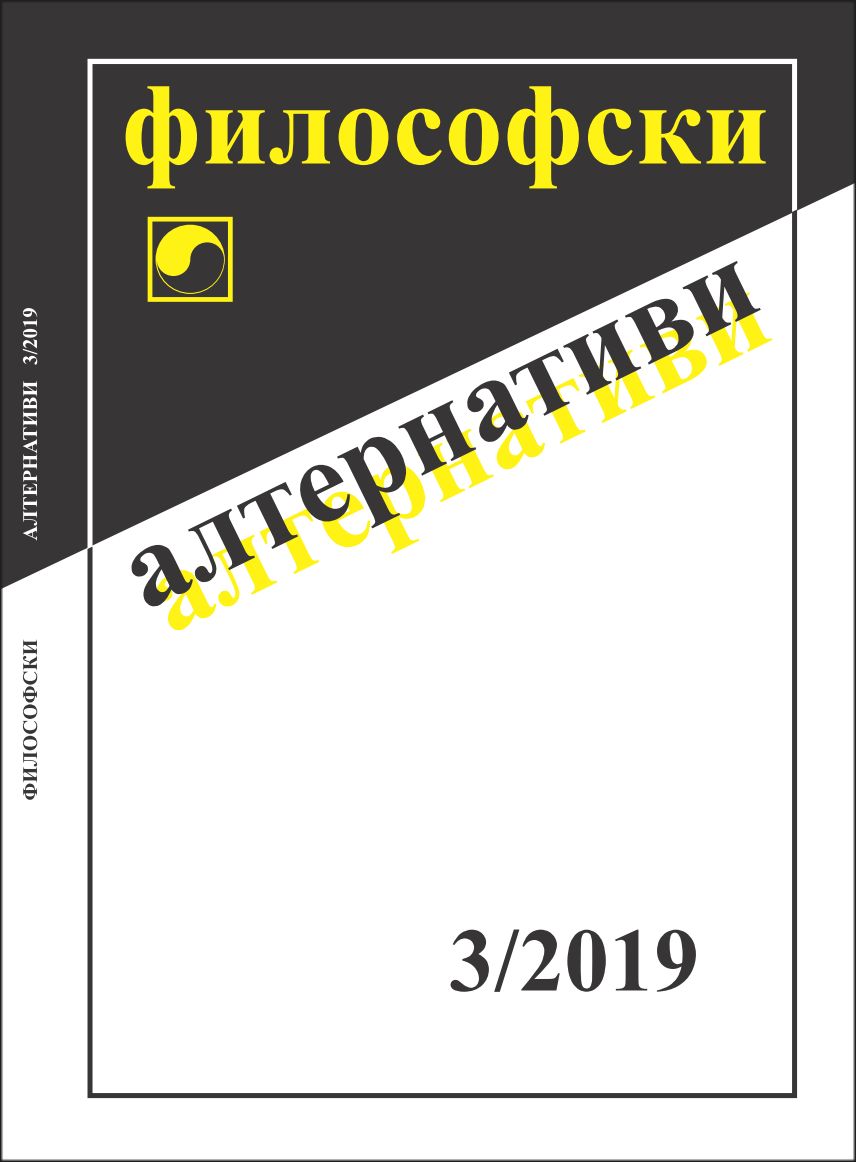
The article considers how prototype is established through a dialectical construction of artistic form. The conception of prototype is presented through a long dialectical examination of the relation between subjective sense and its material counterpart as a topos of symbolic being. The prototype is a regulative ideal pattern of maximum expression in artistic form. The image and its prototype establish each other simultaneously. In artistic experience, we encounter a phenomenon of correspondence. Losev presented a detailed structure of likeness in image, and showed how it involves the disclosure of the prototype.
More...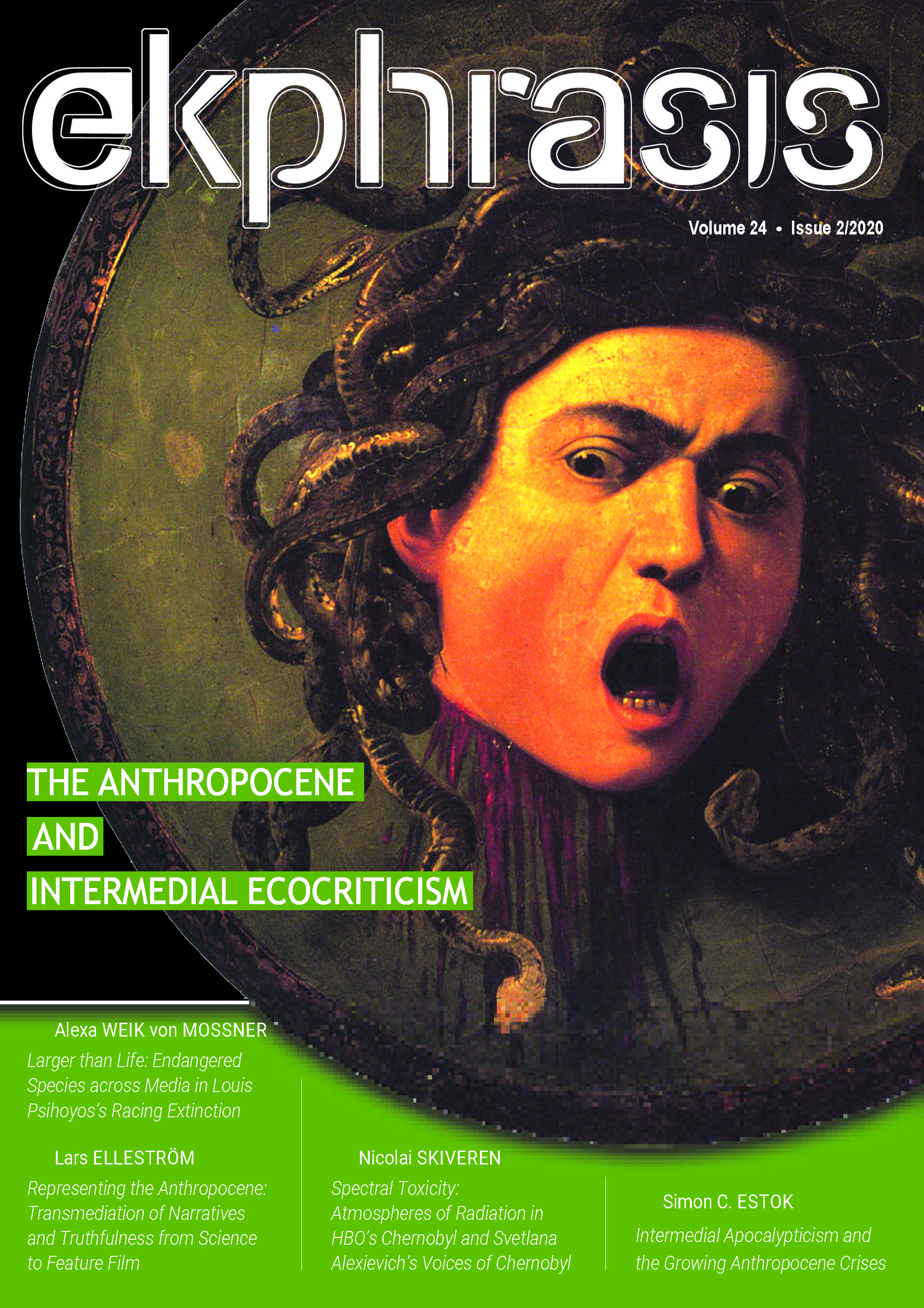
This article proposes eco-intermediality as a cross fertilization between what has been the hitherto predominantly thematic orientation of ecocriticism and the more form-oriented concerns of intermediality studies. To explore the transformative potential of this eco-intermedial conceptual framework, I focus on the 2013 manga adaptation of Hōjōki by the Japanese visual artist Mizuki Shigeru. Hōjōki (1212)is a medieval essay written by the Japanese poet-monk Kamo no Chōmei and bearing witness to a string of environmental disasters that overtook Kyoto at around the end of the twelfth century. The combination of a poignant environmental theme with a long history of translations and adaptations makes this work particularly amenable to an eco-intermedial approach. My main argument is that the post-Fukushima adaptation by Mizuki is a game-changer in such history, inasmuch as the artist brings his unique environmental imaginary and the distinctive formal affordances of manga to bear on Chōmei’ s text, so as to convey the sense of a world where objects and phenomena are endowed with agency and thus outside full human control. The ultimate aim of the present article is to highlight the far-reaching ecological implications of the intermedial textures that Mizuki creates in his manga Hōjōki to express an environmental imaginary hinged on material agency and empathy.
More...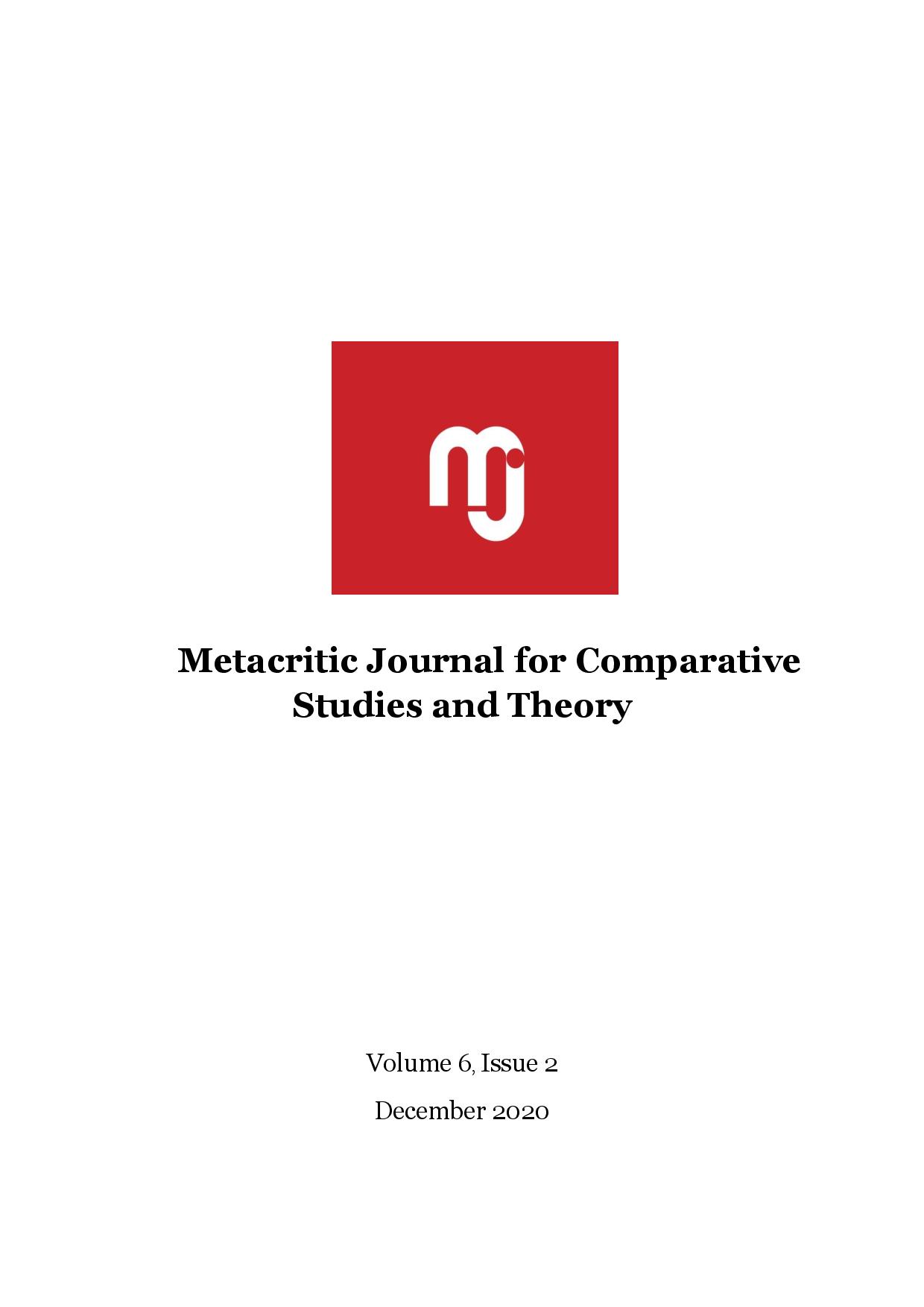
The main goal of this study is to establish a relationship between the use of the portrait and the concept of celebrity, at the end of the 19th century, taking as a corpus of analysis a set of requests for photographs sent by letter to Zola, from correspondents located in different parts of the world. It is intended, through a qualitative analysis of this collection, to identify the functionalities and contexts within this set of correspondents requested in these images, in order to understand the role that photography has taken in the symbolic construction process of this figure as a celebrity.
More...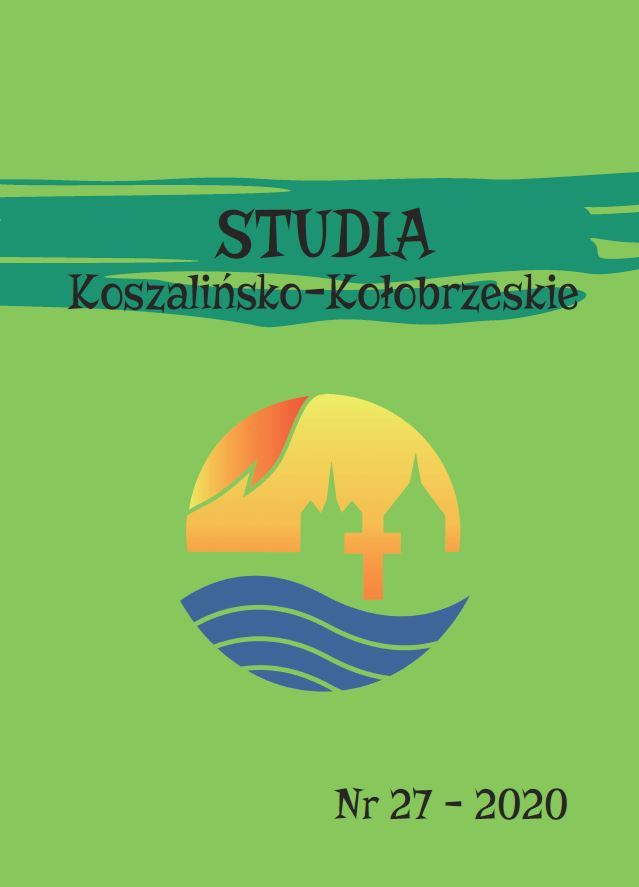
A copy of the goblet and paten of Konrad Mazowiecki, made on the basis of the original from the mid-thirteenth century, was made as part of the research work of the Department of Practical Theology at the Faculty of Theology of the University of Szczecin in cooperation with the “ArtSacr” studio of Jerzy Stachurski Master of Artistic Craft. The chalice and paten offered to the Płock cathedral are an act of reparation of the Mazovian prince Konrad for the murder of priest Jan Czapla, canon of the Plock (Płock) cathedral chapter, Plock (Płock) and Wloclawek (Włocławek) scholastics, made in Plock (Płock) in 1239. The Konrad Chalice is one of the most outstanding works of art from the Middle Ages in Poland. The original made in silver with elements of gilding is in the cathedral treasury of the Diocesan Museum in Plock (Płock). A copy of the goblet and patens was made of bronze, by casting with engraving and carving, silver plated on the outside, and the center of the cup of the gilded plate. From the workshop and iconographic side, it is a work of the highest class. Particularly noteworthy is the iconography, which presents mature theological thought. The Plock (Płock) chalice was made in the Romanesque style (13th century), but you can see the beginnings of a new Gothic style. This is evidenced by the shape of the goblet and the cup nodus. The article discusses the origin of the cup and patens, as well as their description, iconography and theology. Making a copy of the cup and paten for the Archdiocese of Szczecin and Kamien (Kamień) is a contribution to the promotion of Polish culture and national heritage and is a reminder of the historical ties connecting Szczecin and Western Pomerania with Poland in the 12th and 13th centuries.
More...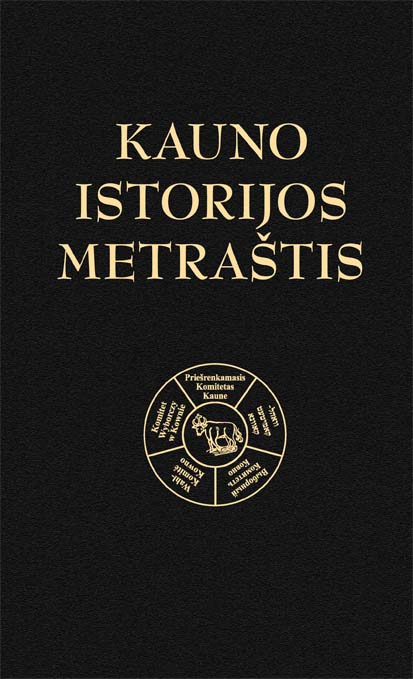
This article analyzes creation works of Wladyslaw Starewich (1882-1965), who is pioneer of puppet (also known as spatial, volumetric) animation. Filmmaker’s works cover even several countries. W. Starewich personality as a creator was formed in Lithuania (in that historical period as part of the Russian Empire), first documentary and entomological films and first spatial animation film were created. The artist continued his animation film creation in Russia, but feature films are the major part of films created here, which have a lot of mysticism, mystery, fabulosity. Creative period in France is the longest and often seen as the most successful. W. Starewich films frequently were created based on motives of fairy-tales or fables, although the artist has created and completely original script. For animation pioneer always since the beginning of his career it was important to experiment with film technical solutions, to improve them, to create new effects. Animation creator designed all his movies by himself from the beginning to the end (only family members, wife and daughter helped him) and he never intended to work in film companies. Maybe perhaps this is why he created peculiar, well-recognizable style which fascinated and influenced other filmmakers at that time.
More...
This article is devoted to the tendencies in the semantics of words скандалand skandal and the derivation with the help of the -gate suffixoid in the modern Russian and Polish mass media discourse being the main environment for the emergence and spreading of scandals. The modern scandal becomes an attention attracting strategy. As a result, new semantic features and a positive connotation appear in the semantics of the words скандал and skandal. The -gate suffixoid is used to derive the terms that may suggest unethical behaviour and a cover-up of scandal, particularly in politics and government.
More...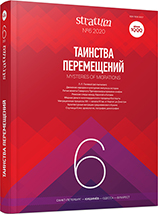
Ecclesiastical architecture of the medieval Crimea is characterized by awide spread of one-nave constructions with a rectangular naos and an off-set semicircular or faceted apse; these churches were widely spread in fortresses, monasteries, residential quarters, mansions, communities and cemeteries. At this stage of studies, we can be more or less certain about two migration processes, which had an impact on the architectural evolution of the one-nave churches on the coastline of the peninsula. The first one dates to the 9th – 10th centuries and was connected with the targeted direct and complex (economic, military-political and cultural and religious) colonization of the Southern Crimea by the Byzantine Empire. This process involved some masters from Cherson and was associated with construction of churches of classical design. The second migration wave dates back to the late 13th – 14th centuries, when refugees from the regions conquered by the Golden Horde, particularly from Cherson, Eski-Kermen, Sogdeia and their environs, had to migrate to remote mountainous areas. This process produced numerous churches with lateral entrance.
More...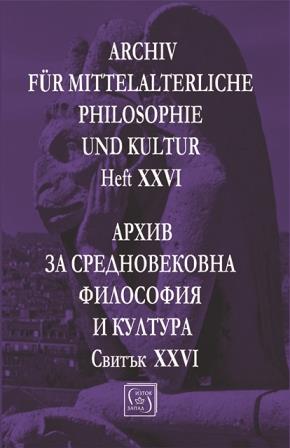
Although medieval presentational genres are often defined as part of the popular religious culture, they often demonstrate sufficient, if not superb, capability for dramatizing important and complex doctrinal cases. What is more, this very capability could be considered as a marker of dramatic excellence. Despite the fact that The Somonyng of Everyman (XVI c.) is in its entirety, not an original dramatic text (being a relatively close translation of the Dutch Elckerlijc), it deserves critical admiration for its theological embodiment. This article aims to focus on some specific examples of such an embodiment while taking into account the theatrical faculties of the text.
More...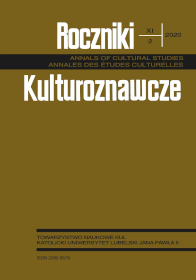
The Illustrated Chronicle, manuscript from 1360, known under the Latin name Chronicon Pictum, ended with the story of the Battle of Posada. The armed clash that took place in 1330 between Hungary and Wallachia is today remembered as a momentous victory for the newly founded Basarab dynasty. Two miniatures depicting the Battle of Posada included on pages 143 and 146, often overlooked in the context of historical elaboration, are an integral part of the story and complement the written text. The picture serves as a record of events and additionally provides information on the then costumes, armaments and artistic means of expression. The analysis of the Battle of Posada based on the 14th-century Illustrated Chronicle is an attempt to supplement historical research with an analysis of miniature painting.
More...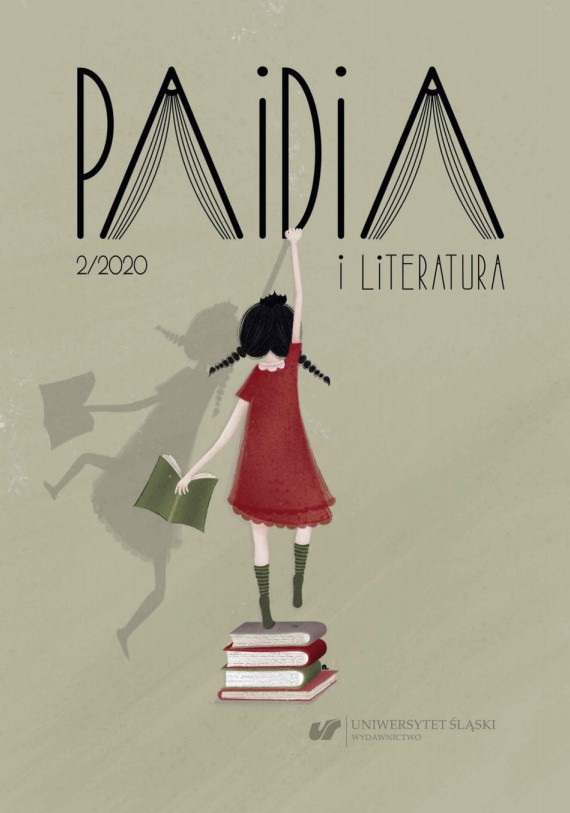
The focus of research in the field of literature for children and youth on objects results from post‑humanistic methodologies and brings about interesting results. Objects play different roles in children’s texts, just as they play different roles in the works of artists, for instance Tadeusz Kantor and Joanna Rajkowska. By interpreting literary texts and works of art, I try to show that the representations of objects from both areas are similar and can serve to the aim of children’s aesthetic education.
More...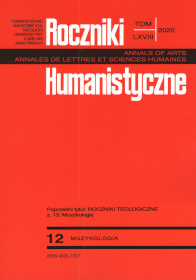
Published in 1815 and dedicated to Tsar Alexander I, Te Deum by Józef Elsner illustrates the trend of religious texts, the function of which can be considered in the context of liturgical celebrations as well as secular ceremonies. On the one hand, this composition is part of the rich traditions of Silesian church music, which the composer was associated with by birth and education. On the other hand, it reflects the state of the development of the 19th century musical culture in Poland, which the greater part of his life was associated with. The compositions mentioned in the article, intended for solo voices, mixed choir and orchestra, consist of five contrasted parts, and are stylistically maintained in the trend of the religious creativity characteristic of Central Europe at the turn of the eighteenth and nineteenth centuries, which can also be seen in a number of other works by Elsner.
More...
The comparative research undertaken concerns the repertoire of Advent songs and Christmas carols contained in two selected songbooks. Over the course of almost 200 years many textual changes have been made to the songs. These include changing the order, exchanging many words for others, replacing whole phrases and verses with new wording, and corrections in the number of stanzas. The tendency to modernise old texts and to reduce stanza is particularly noticeable. These processes are not the result of the natural evolution of language, but the result of the intervention of individuals. It is difficult to agree with many of the consequences of these interventions. The scale of transformation of the selected song group and the conclusions can only be more fully determined after a comparative study of the melody and rhythm of the songs.
More...
This article deals with selected sacred compositions of the Slovak composer Pavol Krška (1949), who is one of the most important representatives of sacred music in Slovakia in recent decades. His vocal and instrumental pieces Requiem, Stabat Mater and Te Deum are frequently performed and thus brought to the attention of both the lay and professional music community. We believe that, as the composer’s work is so well-known in Slovakia, it will gradually find its place abroad.
More...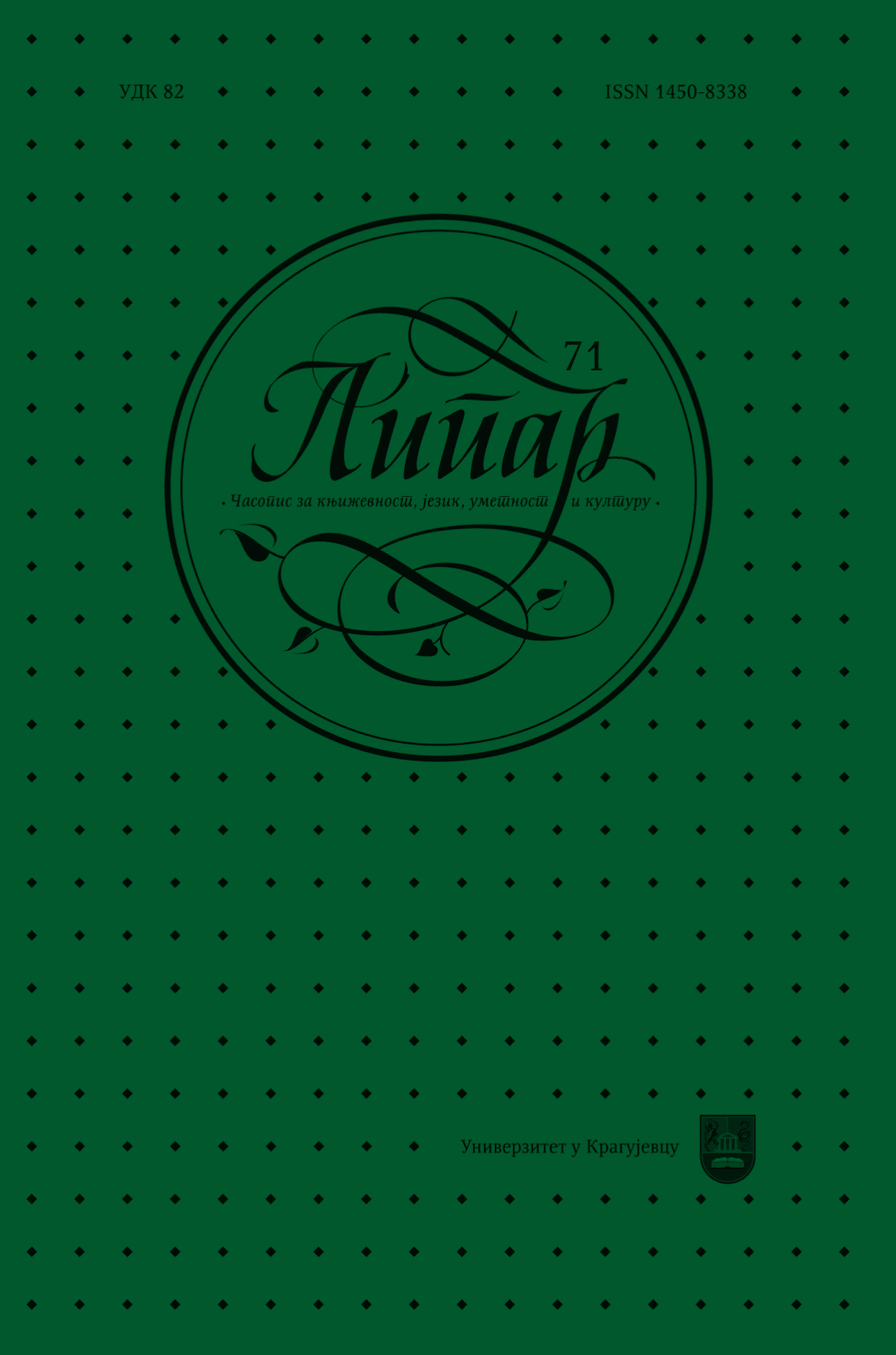
The paper describes the role of chord fill-in exercises in the process of scribing chords in harmonic series of chords which are part of the teaching program of Solfeggio in the basic academic (musical) studies. In a pilot experimental research, exact results have shown the extent to which the experimental factor (chord fill-in exercises) participate in achievement a better students accuracy when listening and scribing chords in harmonic series of chords.Pedagogical research was carried out in the academic year 2017/18 in which the main method was an experiment with one group of respondents consisting of six students of the first year of the study program Music Theory and Pedagogy of the Faculty of Philology and Arts at the University of Kragujevac.The results of the conducted experimental program confirmed the research hypothesis. They proved that chord fillers help students to identify and scribe chords in harmonic series of chords more effectively / accurately, which also indicates the necessity of a more frequent use of chord fill-in exercises in teaching practice, specifically in the work on the writing of chords in harmonic series of chords in teaching Solfeggio.
More...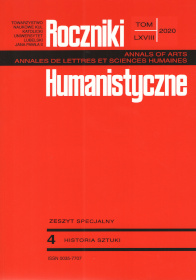
The letter of the Holy Father John Paul II written in Rome in 1987, in the tenth year of His pontificate, on December 4th, on the day of memorial of Saint John Damascene, the doctor of the Church, on the Twelfth Centenary of finishing the controversy over the icon, is of great importance for the Pope’s program of ecumenism. The Holy Father indicated various directions of the dialogue, however, the one of the utmost importance concerned the agreement with the Orthodox Church, which was confirmed in the letters and in His other documents quoted in this paper. The image used to be essential for religious practice, for illustrating the word of prayer and of the song, in order to preserve the tradition of the Church. The strict prohibition introduced by the iconoclasm depreciated not only the artistic tradition of paintings but also the basic dogmas of Christ’s Incarnation and the one which introduced Virgin Mary as the Theotokos (the God-bearer). The ban constituted a threat not only for the icons but also for the Christian faith. In His Letter, the Pope underlined the important role of the Second Council of Nicaea which reintroduced icons and maintained and deepened the meaning of the cult in the faith of believers. Furthermore, the Holy Father indicated the connection with the Second Vatican Council in understanding the function and form of images in contemporary Church. Contemporary trends are overwhelmed by the impotence of the spiritual expression of sacral art, which is a great concern for the Pope. The Letter is, therefore, a dramatic warning of the threats for religious art in contemporary time, expressed by the Holy Father with these words: ‘The rediscovery of the Christian icon will also help in raising the awareness of the urgency of reacting against the depersonalizing and at times degrading effects of the many images that condition our lives in advertisements and the media.’ (DS, 11).
More...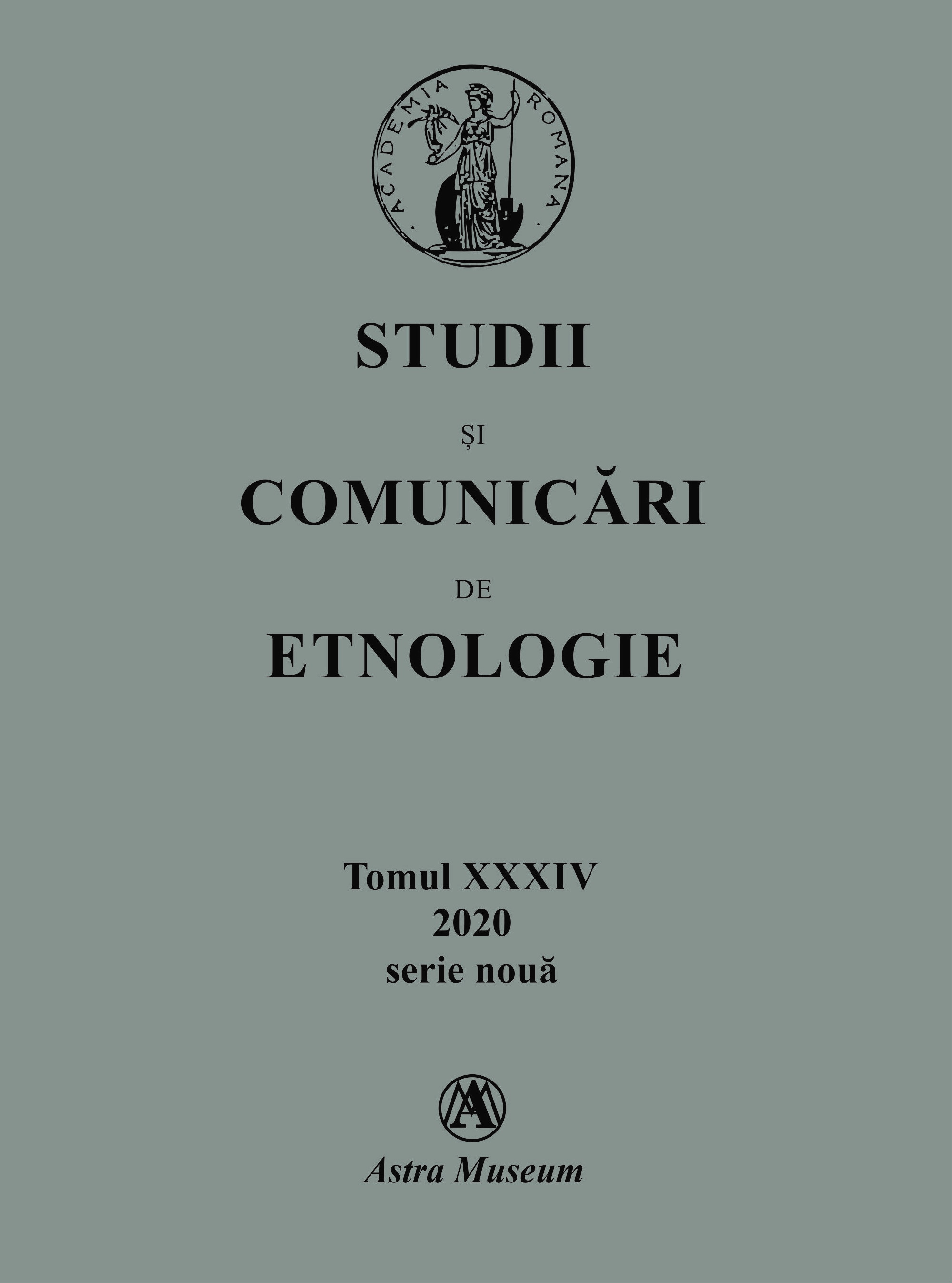
La recherche d'un certain métier ne peut plus être menée méthodologiquement dans la perspective d'une seule discipline, aussi complète qu՚elle soit. Il s'agit d'une approche complexe et interdisciplinaire (ethnographie, ethnologie, histoire, archéologie, sociologie, esthétique, connaissance de technologies spécifiques). La volonté d'analyser autant que possible les données nous a conduit à l'idée de combiner la perspective synchrone avec la perspective diachronique, à partir d'une documentation bibliographique et de terrain approfondie pour la capitalisation des résultats, y compris avec l'aide de disciplines connexes. Les recherches de ces dernières années ont révélé des réalités insatisfaisantes, similaires à celles d'autres domaines où l'artisanat est touché, comme: la restriction du nombre d'artisans, la disparition totale des métiers dans de nombreux centres, le manque d'intérêt des jeunes pour apprendre et pratiquer la poterie, la régression quantitative due au remplacement de plus en plus accentué des objets traditionnels par les objets industriels, la diminution de la circulation des produits. L'ornementation de la poterie obogène, si l'on se réfère à des décors déjà reconnus comme des classiques, tels que: coq, aigle, poisson, feuille d՚erable, chérubin, toile d'araignée, plume de paon, chemin perdu et fer de labour, dépend d'un autre domaine de l'artisanat traditionnel, les œufs décorés. La migration de ces décorations symboliques sur des récipients en argile a commencé avec le maître Marin Diaconeasa, le grand-père du décorateur d'œufs Tudor Diaconeasa, également concerné par les deux métiers. Le chemin perdu, motif ornemental reconnu dans les deux métiers traditionnels analysés, est en fait une métaphore qui définit l'orientation actuelle de la céramique et de la décoration des oeufs.
More...